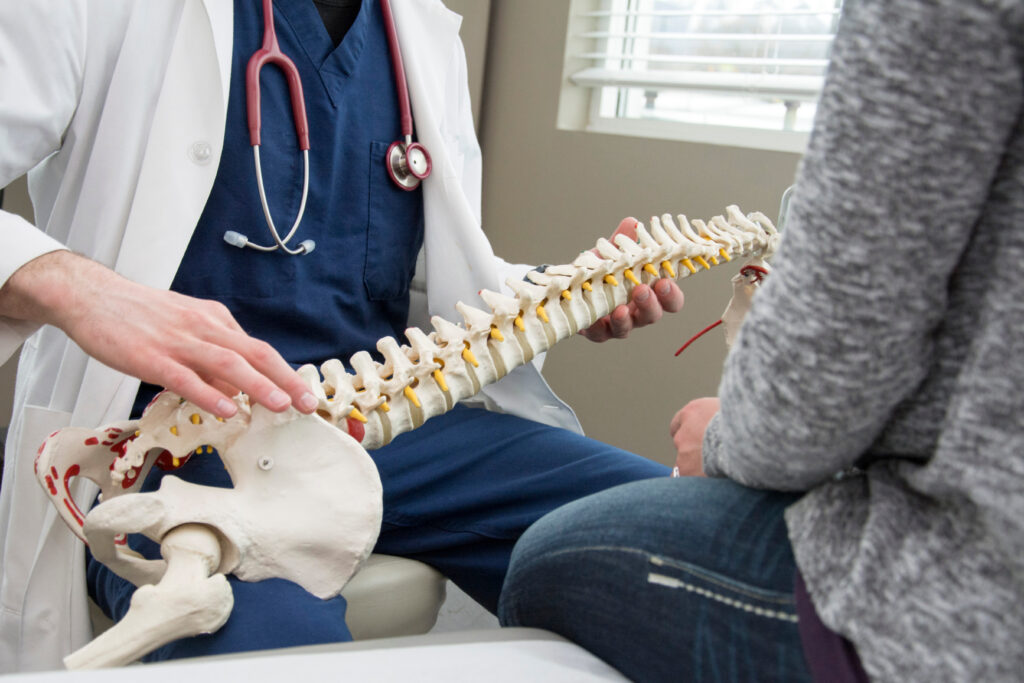Searching For Affordable Options with the Best Spine Surgeons in St Louis MO
Searching For Affordable Options with the Best Spine Surgeons in St Louis MO
Blog Article
A Review of Back Conditions That Usually Outcome in Surgical Treatments
When conventional treatments stop working to minimize relentless symptoms,Back problems such as herniated discs, back constriction, and degenerative disc condition often necessitate medical treatments. These conditions not just lead to considerable discomfort however can additionally severely hinder everyday functioning and overall top quality of life. Understanding the subtleties of each problem and the equivalent surgical alternatives, such as discectomy or spinal fusion, is essential for reliable monitoring. As we discover these problems additionally, it ends up being apparent that the decision-making process surrounding surgical treatment is diverse and warrants careful consideration.
Herniated Discs
Although many individuals with herniated discs might find alleviation via traditional treatments, surgical procedure ends up being a required factor to consider when signs and symptoms linger or aggravate - best spine surgeons in st louis mo. A herniated disc occurs when the soft internal gel of a spine disc protrudes with its outer layer, potentially leading and compressing close-by nerves to discomfort, feeling numb, or weak point in the extremities
Conservative management typically includes physical treatment, discomfort medications, and corticosteroid injections, which intend to reduce inflammation and boost function. Nevertheless, in situations where these methods fall short to reduce incapacitating symptoms, surgical alternatives might be checked out.
One of the most usual procedure for herniated discs is a discectomy, which involves the elimination of the herniated part of the disc to ease pressure on the affected nerve origin. In much more extreme situations, spinal blend may be necessary to maintain the affected vertebrae.
Clients are advised to discuss the prospective risks and benefits of surgery with their health care service provider to make an informed decision. Ultimately, the goal of any kind of medical treatment is to restore function, alleviate pain, and improve overall top quality of life for people experiencing herniated discs.
Spine Stenosis
Spinal constriction occurs when the areas within the spine slim, causing raised stress on the back cable and nerves. This condition can create in different areas of the spine, including the cervical and back locations, typically due to age-related changes, such as degenerative disc illness, joint inflammation, or enlarging of tendons.
Clients with spine constriction may present with symptoms that include pain, pins and needles, tingling, or weak point, mostly in the legs or arms. These symptoms can be exacerbated by tasks that include standing or walking, frequently leading individuals to look for relief through traditional therapies like physical treatment, medications, or epidural steroid shots.
Nonetheless, when these non-surgical treatments stop working to supply ample alleviation, medical options may be thought about. Common operations for back constriction include laminectomy, which involves the elimination of part of the vertebra to ease stress, and spinal fusion, which stabilizes the affected location. The decision to pursue surgical treatment is normally based on the seriousness of signs, the degree of practical problems, and the overall health of the person. Trigger diagnosis and monitoring are vital to avoid additional neurological concession and enhance top quality of life.
Spondylolisthesis
Spondylolisthesis happens when one vertebra slips ahead over another, causing misalignment of the spinal column. This condition can result from numerous factors, consisting of genetic problems, injury, or degenerative adjustments in the spine. It is most commonly check my blog observed in the lumbar area, especially at the L4-L5 and L5-S1 degrees.

When non-surgical methods fall short to ease signs and symptoms or when considerable nerve compression is existing, surgical intervention might be required. Surgical alternatives can consist of spinal blend or decompression treatments, aimed at restoring alignment and alleviating neurological signs and symptoms.
Degenerative Disc Disease

The problem can be detected via a combination of professional analysis, imaging studies, and client background. When these techniques stop additional hints working to offer ample alleviation, medical treatments may be thought about.
Surgical options for DDD may include spinal fusion or artificial disc substitute, focused on maintaining the impacted sector and alleviating discomfort (best spine surgeons in st louis mo). Eventually, the choice of therapy is individualized, taking into account the extent of the problem, patient health and wellness, and way of life variables
Back Tumors

What aspects add to the development of tumors within the spine, and just how do they materialize in individuals? Spine tumors can emerge from numerous aspects, consisting of hereditary tendency, ecological influences, and pre-existing medical conditions. They can be categorized as main lumps, coming from the back, or secondary growths, which spread out from other areas of the body. Clients might provide with a series of signs and symptoms, consisting of local pain, neurological deficiencies, weak point, or changes in bowel and bladder function, depending upon the growth's dimension and area.
Surgical intervention might be warranted to relieve symptoms, get a biopsy, or remove the lump entirely. The objective of surgery is usually to unwind neural aspects and maintain the spine. Early detection and intervention are vital for optimizing outcomes in people Resources with spine tumors.
Final Thought
In recap, spine conditions such as herniated discs, spine constriction, spondylolisthesis, degenerative disc disease, and spine lumps frequently demand surgical treatment due to their possible to create considerable pain and practical disability. While conventional therapies might supply temporary alleviation, surgical options end up being important when signs intensify or persist. Prompt medical diagnosis and treatment play a crucial function in recovering function and enhancing the lifestyle for affected people, underscoring the value of detailed spine treatment.

Report this page